Still looking for that elusive “magical” exercise? You know, the one move that holds the key to building maximum muscle? As a beginner you probably spent time scouring muscle magazines and querying longtime gym rats, only to find a tremendous difference of opinion as to what works best.
But if you were to ask champion bodybuilders and the world’s top strength coaches, they’d agree that the deadlift is, in fact, among the top exercises you can do to pack on size.
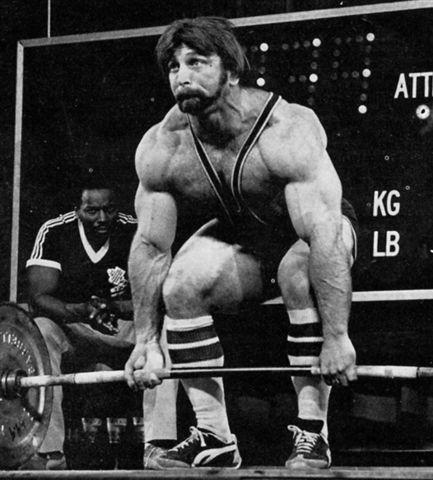
In terms of adding quality mass, it’s the one move you can’t afford not to do.
Texas pro Johnnie Jackson, winner of the 2006 Montreal Pro Classic and considered one of the sport’s strongest men, credits the deadlift as the definitive key to his densely muscled physique. “I gained the bulk of my size when I trained like a powerlifter,” says Johnnie, who deadlifted more than 770 pounds before he became a pro bodybuilder. “I developed so much thickness in my back, legs, and even my chest and shoulders through deadlifting. It’s a total-body exercise.
“I think it’s the single best move for building size, and it can’t be duplicated by other exercises,” he continues. “Many trainees tend to overlook the deadlift because it’s a difficult exercise in terms of both technique and effort, but it’s the toughest test of strength you can do a real strain that challenges your willpower as you try to keep correct form.”

IFBB Professional Bodybuilder Johnnie Jackson Prepares For War!
Power Builder
Former competitive powerlifter David Sandler, MS, CSCS, a strength coach on the faculty at the University of Nevada, Las Vegas, and president of StrengthPro Inc., agrees. “Although it’s a technical lift that takes time to master, you’ll definitely see dramatic strength increases in your legs, hips and back. It’s one of the absolute best moves you can do overall in terms of building explosive strength, especially from a sports perspective.” Another compelling reason to include the deadlift in your training has to do with the anabolic hormones testosterone and growth hormone. Research shows that exercises utilizing the most muscle groups create the highest release of these two critical compounds, both of which are key for prompting muscle growth.
Along with the squat, the deadlift is an optimal choice of exercise if your goal is to recruit the maximum amount of muscle at one time in a synchronized effort.
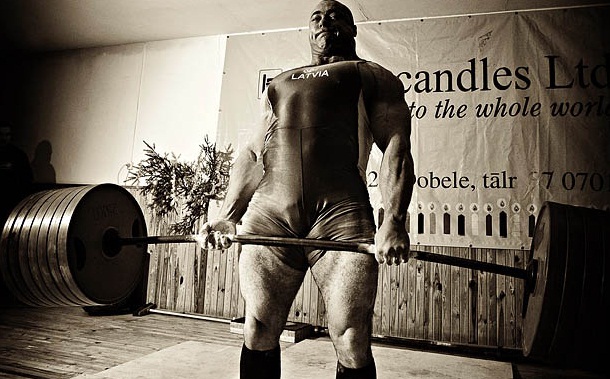
All For One
From a simplistic point of view, the deadlift is nothing more than one of life’s most basic tasks squatting down and picking something up. But on a physiological level, it’s far more complex, Sandler, who deadlifted more than 620 pounds himself during his competitive days, says the move requires several large muscle groups to work in a coordinated fashion. In fact, the deadlift is almost the same as doing leg presses, back extensions, lying leg curls, calf raises, ab crunches, gripping exercises, straight-arm pulldowns and shrugs all at the same time. “You have to keep your midsection tight throughout the move so it brings in the abdominals and low back, and focuses mostly on the hips and legs glutes, hams, low back, quads, even calves,” Sandler explains. “While I wouldn’t call it my first choice in lat movements, just hanging on to the bar and keeping your torso tight also works your rhomboids and lats, and your grip strength is going to increase tremendously as well.” Unlike the other two major lifts, the squat and the bench press, the deadlift movement starts from a purely concentric position, meaning you don’t get a prestretch of the working muscles that effectively increases total force output.
“Since you aren’t preceding the move with an eccentric movement, that in and of itself takes some good strength and quick muscle-fiber recruitment to pull the weight,” Sandler says.
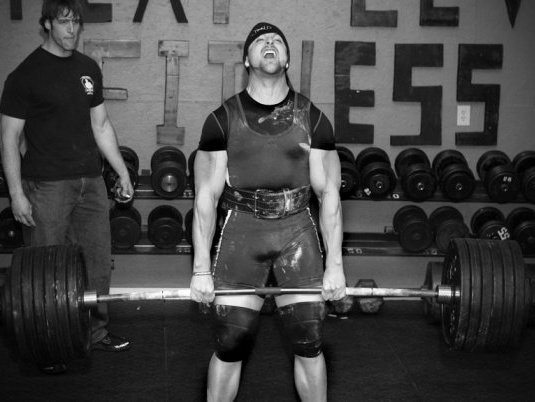
Form Matters
Don’t underestimate the importance of using good form. “The technique’s not as difficult as the squat, but people will commonly start rising up with their hips first instead of simultaneously extending their hips, knees and trunk,” Sandler says. “Concentrate on keeping the bar tight to your body, and maintain an. upright torso position even when you’re bent over. This means your chest is out, your abs are drawn in and your elbows are locked the whole time so you don’t lose force in the extension phase. Practice it over and over again until it becomes second nature.” Sandler says what inevitably happens is that individuals try to load up too much weight too quickly. “When you pile on the weights, you’re no longer able to focus on technique. Keep those light weights on the bar and really work at it until you get good.” Since deadlifts already put tremendous strain on the low back, including the discs, you may not be able to include them in your routine if you have low-back problems.
Even though the deadlift variations (we’ve included five here) focus on various muscle groups, the moves do have a number of commonalities. “The differences relate to body position how far apart your feet are, and how much your hips and knees are flexing but that doesn’t change basic lifting technique,” Sandler notes. “The variations simply affect which muscles get worked.”
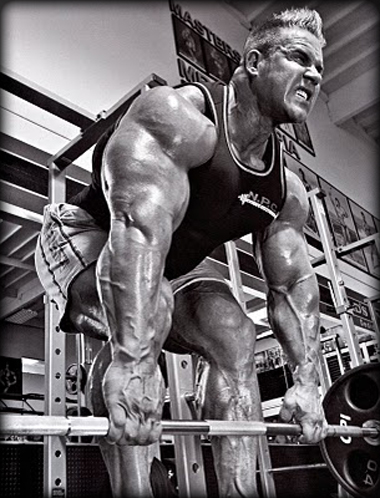 Each version requires you to keep your chest way up, shoulders retracted and abs tight. Bar position, is also important. The bar has to stay close, literally dragged up your shins to your quads. “If that’s painful, wear long socks, put baby powder on your shins or suck it up,” Sandler advises. “For every inch the bar is away from your body, that much more force is multiplied onto your spine and other areas. Biomechanically, you could be talking about tremendous additional force on your body the farther away the bar is, and that ratchets up the risk of injury.” Ultimately, doing deadlifts is a measure of how badly you want to put on size. Sandler says, “The serious lifters are doing them, but you’ve got to start with a light weight to really get the technique down, and there are a lot of guys who don’t want to be seen using very light weights.”
Each version requires you to keep your chest way up, shoulders retracted and abs tight. Bar position, is also important. The bar has to stay close, literally dragged up your shins to your quads. “If that’s painful, wear long socks, put baby powder on your shins or suck it up,” Sandler advises. “For every inch the bar is away from your body, that much more force is multiplied onto your spine and other areas. Biomechanically, you could be talking about tremendous additional force on your body the farther away the bar is, and that ratchets up the risk of injury.” Ultimately, doing deadlifts is a measure of how badly you want to put on size. Sandler says, “The serious lifters are doing them, but you’ve got to start with a light weight to really get the technique down, and there are a lot of guys who don’t want to be seen using very light weights.”
Of course, if you’re a loyal reader of Simplyshredded.com, “all show and no go” isn’t your style. If you’re willing to put in the hard work and have the discipline to stick it out and we’re confident that you do you’ll be using your new deadlift knowledge to bring new muscle gains to life.
Getting The Deadlift Right
The conventional deadlift requires you to learn perfect technique. Get it right on each and every rep to ensure you stay injury-free. This also makes it easier to learn the many deadlift variations, which demand similar technical considerations.
Get warmed up
Do a 5-10-minute cardio warm-up plus some simple exercises to get blood flowing through the muscles, joints and connective tissue of the upper and lower body. When going heavy, include several lighter sets not taken to failure.
Skip the belt
For all but your heaviest sets, rely on the strength of your torso muscles instead of a lifting belt. Wearing a belt takes some stress off the lower back while increasing the workload on the abs, but it won’t improve your overall torso strength.
Never allow your grip strength to compromise the lift
If your grip is giving out even though your legs and back can handle the weight, use chalk or straps to assist in the lift. Otherwise go raw.
Set up the bar
Load the barbell on the floor with collars snug so the plates won’t roll of. Clear the area of loose plates and other equipment.
Get feedback
If you’re new to the lift, have someone with knowledge of deadlifting watch your form to provide feedback on your technique.
Getting It Dead Right!
Tackling this full-body exercise requires the precise coordination of several major muscle groups, not to mention plenty of practice, in order to get your body in sync for this bodybuilding staple, start where else? by mastering the fundamentals
The Basics:
What you should know about the ready position
#1 Foot Position
Position your feet flat on the floor, slightly less than shoulder width apart, toes forward or pointed slightly outward. This provides a stable base and allows the knees to track over the toes as you descend. Stand up straight over the bar. As you look down, the bar should be over the bridges of your feet, touching your shins
#2 Body Position
 Bend your knees and lower your hips into a deep-squat position; your thighs should be at about a 45-degree angle to your lower legs. Keep your glutes down and arms straight throughout the move. Keep your shoulders back and chest out, with your midsection drawn in and tight.
Bend your knees and lower your hips into a deep-squat position; your thighs should be at about a 45-degree angle to your lower legs. Keep your glutes down and arms straight throughout the move. Keep your shoulders back and chest out, with your midsection drawn in and tight.
#3 Get A Grip
Grasp the bar equidistant from the center with an overhand grip (thumbs wrapped around the bar) slightly wider than where your legs touch the bar, arms straight. Your hands need to be out-side your legs so you don’t drag them up your shins. You can also use an alternating or staggered grip (one palm forward, the other backward), which helps prevent the bar from rolling out of your hands. (In fact, research indicates that you can do more reps with a staggered grip than with an overhand one.) Power-lifter and bodybuilder Johnnie Jackson says he prefers his stronger hand to be the one with the under-hand grip. Some heavy lifters use a pronated “hook” grip, in which both palms face backward and the first 2-3 fingers wrap around the thumbs instead of the other way around.
This method takes some practice and may be painful at first, says strength coach David Sandler, MS, CSCS, but it allows you to use very heavy weights without straps, and you’ll develop superior grip strength.
#4 Flatten Your Back
Stick your chest out and keep your shoulders back to flatten your back. You must keep your low back locked in this con-tracted position throughout the move to maintain normal spinal curvature and prevent rounding. Don’t flex or extend your spine; keep your lower-back muscles strongly contracted to handle the stress placed on the spinal vertebrae and discs.
#5 Get Focused
Focus on proper mechanics with each rep, especially during your warm-up sets. “When you use proper form and your body starts repeating the movement pat-terns, it becomes automatic and easier to ensure you’re doing the move right with heavy weights,” Johnnie says. Sloppy form increases the risk of injury. Johnnie admits he repeats to himself over and over, I’m the strongest man in the world, which helps him get into the zone to move Weights in excess of 700 pounds.
#6 Head Position
Look straight ahead or just slightly up. Looking down increases rounding of the back and your body Will tend to lean forward to a greater degree, Johnnie says. Looking too high will put undue stress on your cervical spine.
The Deadlift:
Step-By-Step
1 Inhale
Take a deep breath and hold it as you start the pull off the floor. This increases torso stability by bracing the spine and helps generate greater strengh of the muscles involved when you’re lifting heavy.
2 Bar None
Keep the bar close to your body (actually touching) throughout the range of motion. “You never want the bar to be off your body,” IFBB pro Johnnie Jackson says.
3 Start The Pull
 Pull the weight off the floor by straightening your legs, keeping your back flat and the bar close to your body with your arms straight. Your shoulders and hips must come up at the same relative speed; don’t let your hips “kick up” before your shoulders move. “People will commonly start rising up with their hips first instead of extending their hips, knees and trunk simulataneously,” Sandler says. Think about pushing through the floor with your feet as you drive to stand upright.
Pull the weight off the floor by straightening your legs, keeping your back flat and the bar close to your body with your arms straight. Your shoulders and hips must come up at the same relative speed; don’t let your hips “kick up” before your shoulders move. “People will commonly start rising up with their hips first instead of extending their hips, knees and trunk simulataneously,” Sandler says. Think about pushing through the floor with your feet as you drive to stand upright.
4 Losing Form
If you feel you’re losing your form as you execute the move, just drop the bar don’t try to complete a rep, especially with heavy weight, if you’re in a compromised body position.
5 Keep Your Back Flat
Once you get the bar over your knees, maintain a straight back. As your legs approach full extension, squeeze your glutes to drive your hips forward and raise your torso back and up to the erect position.
Concentrate on pulling with your hip muscles, not your arms, when raising your torso.
6 Speed
Keep the pull-explosive as you ascend in a smooth motion, accelerating out of the bottom position while keeping the bar under control. When first learning the exercise, move very dellberately to master the technique. As you become more experienced, Johnnie recommends using a forceful speed even on your practice sets to condition your body to do so automatically on the heavier ones.
7 Exhale
Breathe out forcefully as you reach the top of the lift.
8 At The Top
Stand erect in the fully upright position with your legs straight and knees unlocked, but dont lean back at the top of the lift. Keep your chest out and shoulders back, holding the arch in your lower back. Take 1-3 deep breaths and hold your breath as you descend back down.
9 Stay Aligned
Keep your ankles, knees and hips aligned at all times to ensure an ideal line of force and reduce stress on the knees and hips.
10 On The Way Down
Lower the bar under control by bending your hips and knees. Push your hips back and, as you bend your knees and maintain normal spinal curvature, incline your torso forward about 45 degrees. The exact degree. of forward inclination is determained by your ability to hold the natural arch in your lower back.
11 Feet Flat On The Floor
Keep your weight centered over your feet. If your head is down, it can pull your body forward and your heels will come off the floor, which disengages a lot of the working muscles, Johnnie says.Keep your bodyweight centered over your feet at all times.
12 At The Bottom
Don’t bounce the bar off the floor at the end of the lift. Stop at the bottom as the plates touch the floor, then go right into the next rep from a dead stop.

Deadlift Alternatives
Now that you know the basics, here are 5 variations you can work into your program
Deadlift Alternatives: Romanian Deadlift
 This places greater emphasis on the hamstrings and glutes than the conventional deadlift, and it features more glute emphasis than the stiff-legged deadlift.
This places greater emphasis on the hamstrings and glutes than the conventional deadlift, and it features more glute emphasis than the stiff-legged deadlift.
Get It Right:
Stand erect holding the bar just outside your hips with an overhand grip, your feet hip-width apart, knees unlocked and arms straight. Lean forward from your hips, pushing them rearward as the bar slides down to mid-shin level and your upper body approaches parallel to the floor. Reverse direction, maintaining the arch in your lower back and pushing your hips forward as you exhale at the top.
Bodybuilding Tip:
Stop your descent before your back Starts to round (bar at about mid-shin level). If you bend your knees;too much, you take muscular stress off the hamstrings.
Deadlift Alternatives: Trap-Bar Deadlift
This is similar to the conventional deadlift except you stand inside a trap bar (available in most serious gyms), which is a better option if you have difficulties with balance, technique or a standard barbell hitting your knees. The trap bar also reduces stress on your spine and emphasizes your quad and hip strength.
Get It Right:
Bend into a squat with your back flat to grasp the handles, your ankles, hands, shoulders and head aligned when viewed from the side. Inhale and begin the lift by straightening your legs and hips, keeping your back flat throughout.
Bodybuilding Tip:
For greater range of motion, use 25-pound plates rather than 45s, allowing you to go deeper in the start position for more leg mass and strength development.
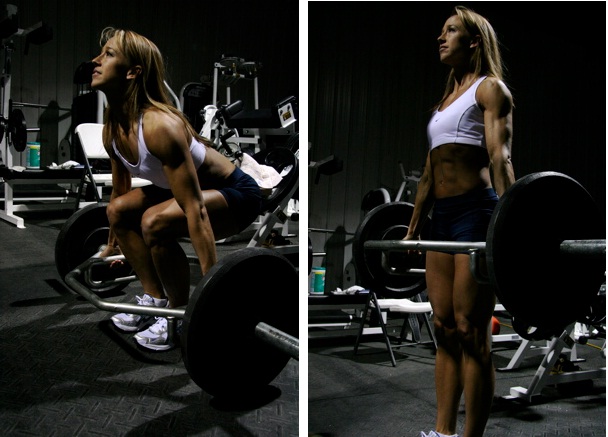
Deadlift Alternatives: Rack Deadlift
This is a partial-rep version of the conventional deadlift, and is performed inside a power rack with pins set so the bar is just below or above the knees. Because the range of motion is much shorter, you can use more weight here than on a regular dead; the greater overload over time helps increase your strength on conventional deadlifts.
Get It Right:
Using the same body position as the conventional dead-lift, arms just outside your thighs,take a staggered or an overhand grip, extend your torso into the top deadlift position and maintain a flat back throughout the lift.
Bodybuilding Tip:
Focus on forcefully contracting your your glutes and hams in the top position for added development of these muscles.

Deadlift Alternatives: Sumo Deadlift
Foot position is the major difference here: Take a very wide stance with your arms between your legs. This movement brings in more thigh muscles, including the adductors, quads and inner hamstrings, rather than the glutes and lower back.
Get It Right:
Your feet should be angled outward about 30-40 degrees. Lift the bar using your legs while maintaining an upright torso position and keeping your back flat, exhaling as you approach the top part of the movement.
Bodybuilding Tip:
If you can’t squat because of knee, hip or back injuries, consider the sumo dead lift as an alternative move on leg day.

Deadlift Alternatives: Stiff-Legged Deadlift
 This movement is performed similarly to the conventional deadlift except you keep your knees straight but not locked throughout the move. This puts more emphasis on the lower back, hams and glutes, and it reduces quad activity.
This movement is performed similarly to the conventional deadlift except you keep your knees straight but not locked throughout the move. This puts more emphasis on the lower back, hams and glutes, and it reduces quad activity.
Get It Right:
With your bodyweight balanced evenly on both feet, bend at the waist and allow your back to round slightly; the bar should freely hang straight down from your shoulders at about mid-shin height. Extend your torso back up pulling with your hip muscles, not your arms- and stand straight up without leaning back at the top.
Bodybuilding Tip:
Dont sacrifice form in an effort to increase range of motion; you don’t need to do this exercise off the edge of a bench to gain distance.
Author: Bill Geiger
References:
http://www.muscleandfitness.com/
http://www.flexonline.com/
COPYRIGHT 2010 Weider Publications
COPYRIGHT 2010 Gale Group










